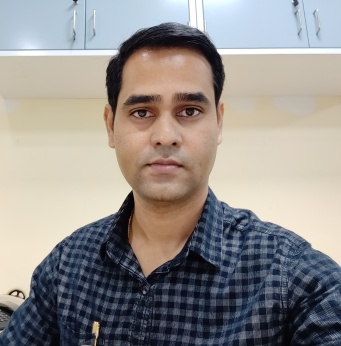
Assistant Professor
E-mail: prasadabnave at rcb dot res dot in
Investigating Adult Stem Cells Dynamics in the Infection Scenario.
Adult stem cells (ASCs) are fundamental players in the tissue maintenance as they serve to restore damaged tissue during injury or infection. However, during severe bacterial/ viral infections, the tissue regeneration in mammals is hugely inhibited. Recent evidence suggests that the mammalian ASCs have a limited tolerance to the infection stress. Sometimes they over-proliferate and develop cancer or they exhaust by terminally differentiation. Indeed the failure in the maintenance of healthy tissue is the cause of several deadly diseases. Hence, improving ASCs tolerance to such burden is of profound biomedical importance.
Planarian pluripotent ASCs possess extraordinary abilities to deal with such stress. The ASCs in planarians allow them to grow an entire body from a tiny tissue fragment. The genetic machinery essential for the stemness in mammalian stem cells is conserved considerably within planarian ASCs. Planarian ASCs can be easily studied in vivo or isolated by FACS in ample amount for nextgeneration sequencing applications such as RNA-Seq, ChIP-Seq etc. Hence, planarian is a convenient model system to study ASCs dynamics in vivo.
Unlike mammalian ASCs, the planarian ASCs function remains unaffected during bacterial infections. We would like to exploit this potential to investigate the molecular mechanisms governing the stem cell dynamics during chronic infections. Further, we will look to use the knowledge gained from planarian ASCs to modulate genetic machinery in mammalian ASCs to enhance their tolerance to the infection stress.
Our research program is mainly addressing the following questions:
The study will be performed on various in vivo (Planarians, Mice) and in vitro (Cell lines) model systems to address specific questions and will also involve handling of number of bacterial/ viral pathogens. We will employ wide range of Cell Biology and Molecular Genetics techniques such as RNAi, RNA-Seq, ChIP-Seq, Confocal microscopy etc. to address the above-mentioned questions.
This research will expand our understanding of how ASCs respond to infection and infection-induced tissue damage. In the long term, this will help us to design genetic strategies to increase the competence of existing as well as transplanted ASCs during regenerative therapies so that they can function efficiently under stressful chronic and acute disease conditions.
We are looking for enthusiastic project assistants, junior research fellows and postdocs to join the group. If you are interested in our research then please feel free to contact at prasadabnave@rcb.res.in.
(#equal contribution, *Corresponding author)
Dr. Prasad Abnave
Assistant Professor
Regional Centre for Biotechnology
NCR Biotech Science Cluster
3rd Milestone, Faridabad-Gurgaon Expressway
P.O. Box No. 3, Faridabad - 121 001
Haryana (NCR Delhi), India
E-mail: prasadabnave at rcb dot res dot in
Phone: 91 129-2848757